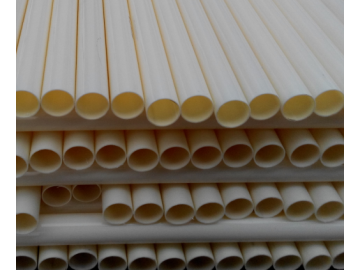ABS plastic pipe installation uses socket connection and sealed with solvent adhesive.
ABS plastic pipe has low flow friction, greatly reducing fluid resistance and pump power, good impact resistance, good mechanical strength and high toughness; when suddenly attacked, it only undergoes toughness deformation.
ABS pipe fittings are commonly used in the fields of chemical industry, light industry, metallurgy, oil fields, electronics, pharmaceuticals, brewing, food processing, construction, civil water supply and drainage, etc., for conveying various corrosive media and high-purity media, especially suitable for water treatment and environmental protection systems. This product is corrosion resistant, acid and alkali resistant, can replace stainless steel, lined rubber, galvanized pipes, durable and cost-effective.
Features:
(1) ABS pipe has high working pressure: the pressure is 1.0Mpa at room temperature of 20°C.
(2) ABS pipe has good impact resistance: it only undergoes toughness deformation when suddenly attacked.
(3) ABS pipe has stable chemical properties, non-toxic, odorless, fully compliant with hygiene and safety requirements of pharmaceutical, food and other industries.
(4) ABS pipe has low fluid resistance, smooth inner wall, arc shape at bends, reducing flow friction, greatly reducing system fluid resistance and pump power consumption. Material: ABS (acrylonitrile-butadiene-styrene) non-toxic, odorless, smooth inner wall, arc shape at bends.
(5) ABS pipe has a wide range of operating temperatures: -20°C to +70°C.
(6) ABS pipe has a long service life: can be used indoors for up to 50 years, longer if buried underground or in water, without obvious corrosion.
(7) ABS pipe is easy to install with good sealing: socket connection with solvent adhesive sealing, easy installation, fast curing speed, high bonding strength, avoiding the phenomenon of running, leaking, dripping, or leaking in general pipelines.
(8) ABS pipe is light in weight, saving: ABS is 1/7 of the weight of steel, reducing structural weight, reducing labor intensity for workers, reducing raw material consumption, and saving a lot of engineering costs.














